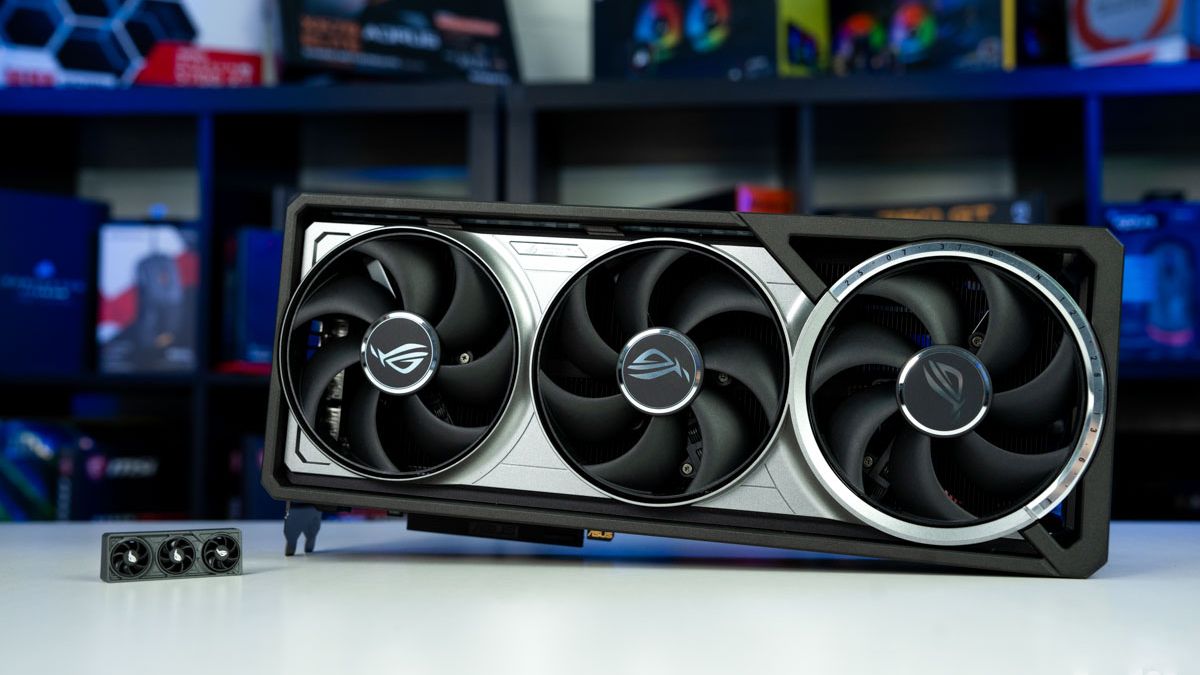Nvidia’s next generation of graphics cards could offer at least 20% performance uplift, suggests CEO

Table of Contents
Despite offering several technology enhancements, the RTX 50 Blackwell graphics cards have not impressed consumers due to their middling raster performance gains compared to the previous generation. According to Nvidia CEO Jensen Huang, that will change with the next generation of GPU tech, thanks to a technology called GAA.
When boiled down to the absolute basics, a CPU or GPU is a huge collection of logic gates forming transistors, all intricately connected and piled onto silicon wafers. As technology has advanced, transistors have become smaller, and greater numbers of them have been concentrated on chips.
Prime Day is finally here! Find all the biggest tech and PC deals below.
- Sapphire 11348-03-20G Pulse AMD Radeon™ RX 9070 XT Was $779 Now $739
- AMD Ryzen 7 7800X3D 8-Core, 16-Thread Desktop Processor Was $449 Now $341
- ASUS RTX™ 5060 OC Edition Graphics Card Was $379 Now $339
- LG 77-Inch Class OLED evo AI 4K C5 Series Smart TV Was $3,696 Now $2,796
- Intel® Core™ i7-14700K New Gaming Desktop Was $320.99 Now $274
- Lexar 2TB NM1090 w/HeatSink SSD PCIe Gen5x4 NVMe M.2 Was $281.97 Now $214.98
- Apple Watch Series 10 GPS + Cellular 42mm case Smartwatch Was $499.99 Now $379.99
- ASUS ROG Strix G16 (2025) 16" FHD, RTX 5060 gaming laptop Was $1,499.99 Now $1,274.99
- Apple iPad mini (A17 Pro): Apple Intelligence Was $499.99 Now $379.99
*Prices and savings subject to change. Click through to get the current prices.
Gate All Around technology for GPUs
Recent chips have used a technology called FinFET, which uses a structure that places a transistor gate around three sides of a current channel. During a Q&A session at the GPU Technology Conference, Jensen Huang spoke of transitioning to GAA or ‘Gate All Around' technology. This new structure stacks current channels vertically instead of horizontally, allowing transistors to be arranged around all four sides of the current channel.
Huang estimated that this new technology could provide a 20% increase in performance compared to the previous FinFET chips. This ties in to the technology roadmap discussed by Huang during his GTC keynote speech. For reference, the current generation of consumer graphics cards utilizes Blackwell architecture.

The Vera Rubin architecture was unveiled by Huang during the GTC keynote speech, along with the longer-term aspirations for a successor architecture called Feynman. Nvidia is likely to stay with FinFET for the Vera Rubin architecture, since that is set to start shipping to enterprise customers as of late 2026.
It is possible, however, that the GAA technology could be implemented for Feynman, which is expected to launch in 2028. Two generations seem like a long wait for a 20% improvement, but as silicon reaches the limits of its capabilities, big leaps are becoming rarer, hence Team Green’s growing focus on AI-powered graphics.
We should stress that we don’t currently know what architecture the next gaming graphics cards will use, but reports say that Nvidia is accelerating the Feynman chip design with Blackwell GPUs, providing a link between the two at the very least.

